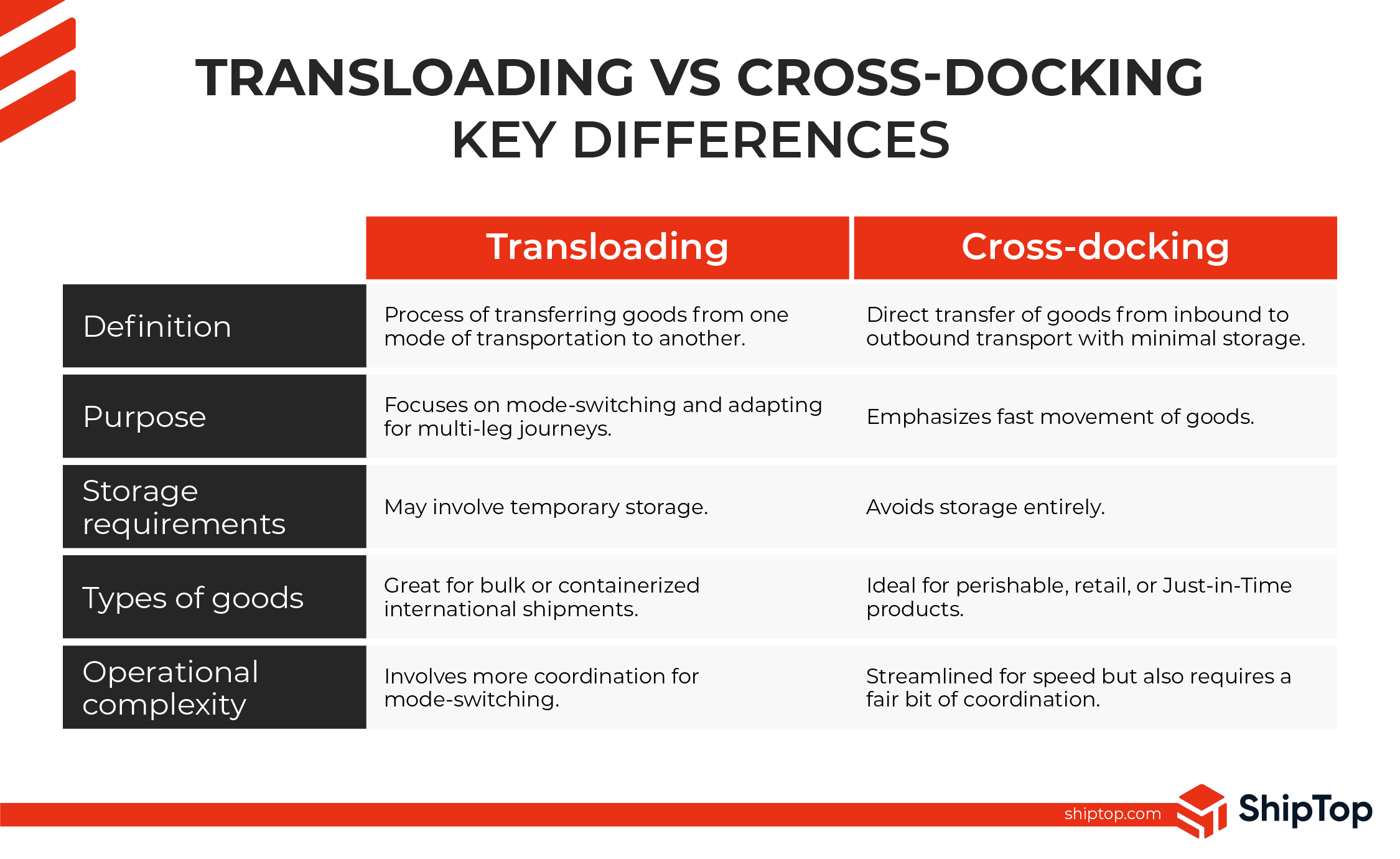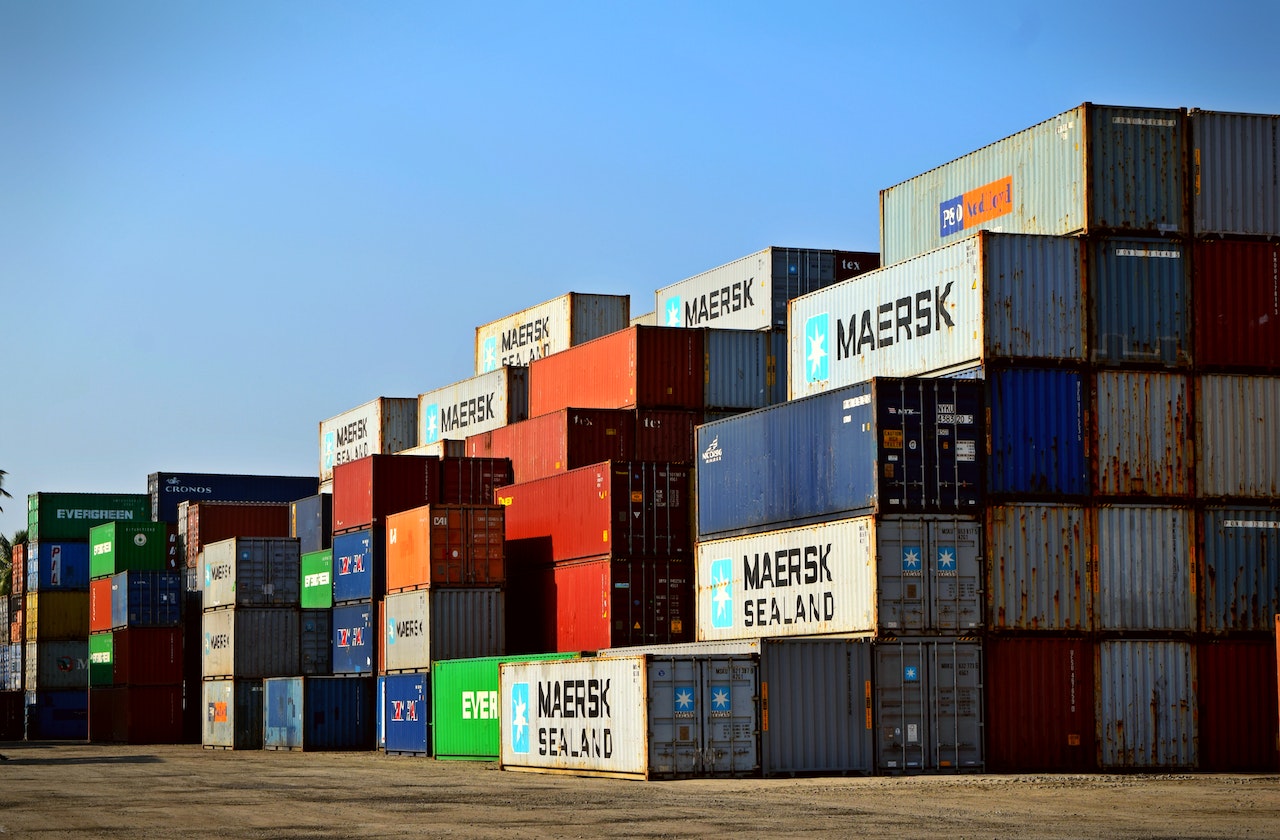As a 3PL company and leading distribution center, we know that logistics can be a complex and overwhelming process for businesses. That’s why ShipTop offers a range of services to help eCommerce brands streamline their logistics operations and improve efficiency.
Two of those services are called transloading and cross-docking. Customers often ask us to explain the difference between the two — so here it goes.
The differences between transloading and cross-docking
Transloading involves transferring goods between different modes of transportation, often with temporary storage, to facilitate long-distance or international shipping. Cross-docking, on the other hand, focuses on quickly moving goods from inbound to outbound transport with minimal storage, ideal for fast-moving, time-sensitive products.

Below, we provide additional information for those who want more context about ideal use cases for both transloading and cross-docking.
What are transloading services?
Transloading refers to the process of transferring goods from one mode of transportation to another. For example, a shipment of electronics from China might arrive at a US port in a container, and then be transloaded to rail or truck for delivery to distribution centers inland.
Reasons to use transloading:
- For international or multi-modal supply chains: Transloading is often integral in global supply chains where goods need to travel across different regions, countries, or continents. The journey typically involves multiple modes of transportation, such as ocean freight, rail, and trucks.
- When shipping over long distances: Transloading allows companies to leverage the most cost-effective transportation methods for each leg of the journey. For instance, bulk rail transport is more economical for long-haul inland routes, while trucks are better for last-mile delivery.
- When consolidation is needed: Transloading is especially useful when smaller shipments from various suppliers need to be combined into larger loads for cost-effective shipping. Conversely, it can also break down larger shipments into smaller ones for distribution.
What are cross-docking services?
Cross-docking involves unloading incoming goods from one vehicle and loading them directly onto another vehicle for immediate shipment to the next destination.
Unlike transloading, cross-docking does not involve storing the goods in a warehouse or other storage facility. Instead, the goods are transferred from one vehicle to another as quickly as possible. The goal is to minimize handling and reduce the time it takes for the goods to reach their final destination.
For instance, a retailer may use cross-docking to receive goods from a supplier and immediately load them onto delivery trucks for distribution to stores or customers. This helps reduce lead times and ensure that goods are always in stock and ready for sale.
Reasons to use cross-docking:
- For fast-moving goods or tight delivery schedules: Cross-docking is perfect for products that need to be delivered quickly or have a high turnover rate. It minimizes time spent in storage by moving goods directly from receiving to shipping areas.
- In industries like retail, eCommerce, or perishables: Certain industries rely on speed and efficiency to meet demand or preserve product quality. Cross-docking aligns with their need to minimize inventory holding and deliver goods promptly.
- When storage costs are a major concern: Warehousing and inventory holding can be costly, especially in industries where profit margins are tight. Cross-docking reduces or eliminates the need for storage, saving businesses a lot of money.
Need transloading or cross-docking services? Connect with ShipTop
ShipTop offers both transloading and cross-docking services to help you streamline your logistics operations and order fulfillment.
Our warehouses are strategically located across Canada, allowing us to efficiently transload goods from one mode of transportation to another and quickly cross-dock incoming goods. We have the equipment and expertise to handle these operations efficiently, ensuring that your goods reach their final destination as quickly and cost-effectively as possible.
For example, if you need to transload goods from a ship to a truck or vice versa, ShipTop’s warehouses near the Vancouver port have you covered.
Whether you’re an eCommerce entrepreneur looking to optimize your fulfillment operations, or a logistics coordinator in need of reliable transloading or cross-docking services, ShipTop has you covered.
Get a quote or contact us to learn more about how we can help you achieve your logistics goals.






